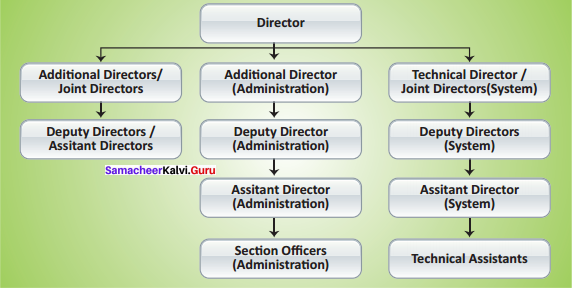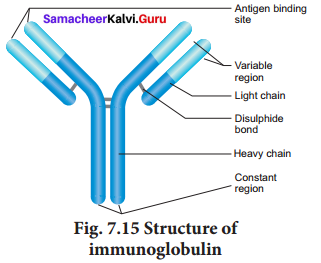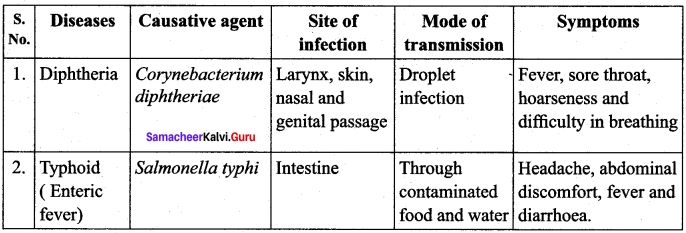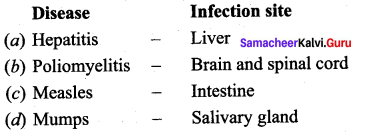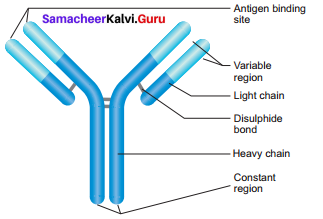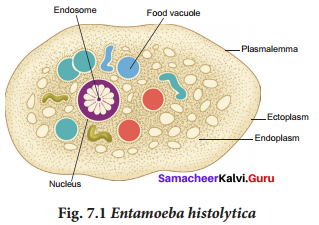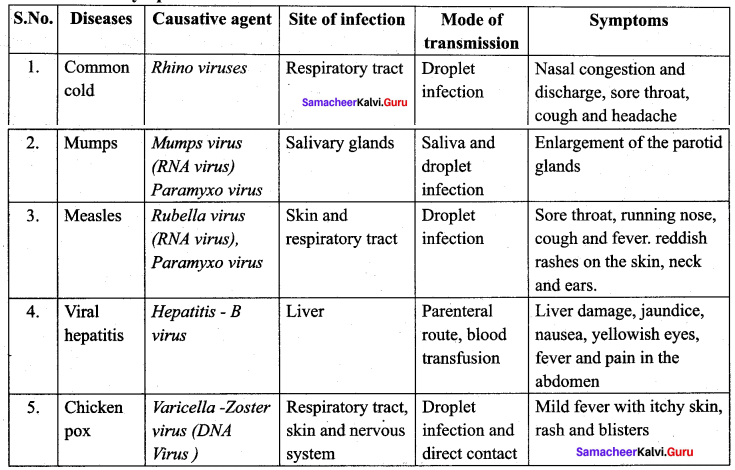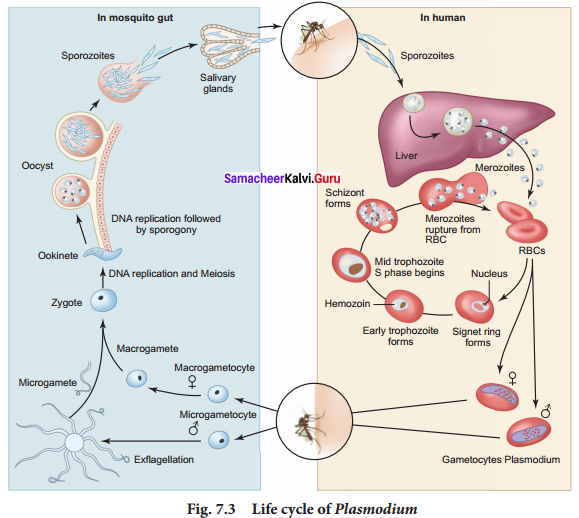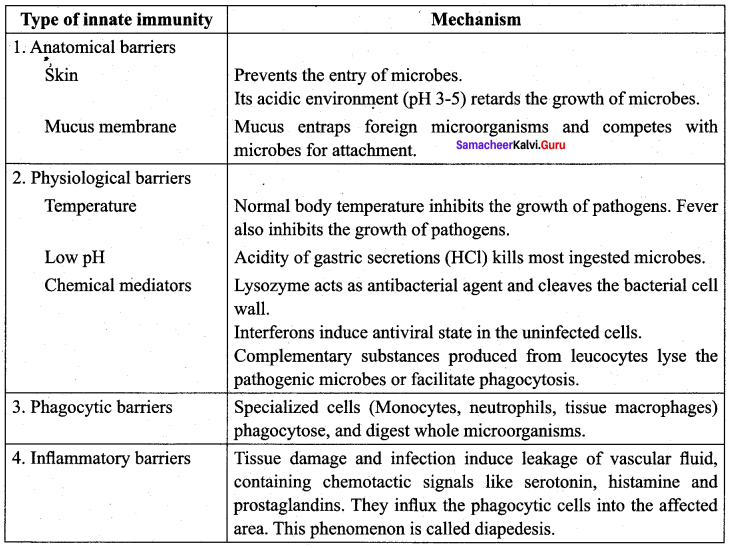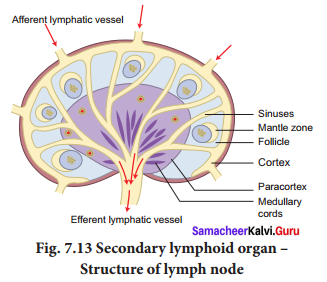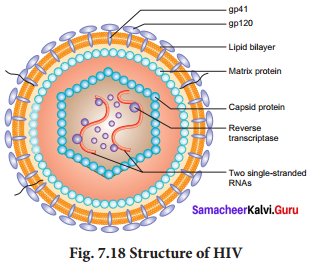Enhance your subject knowledge with Tamilnadu State Board Solutions for 15th Commerce Chapter 15 Recent Trends in Marketing Questions and Answers and learn all the underlying concepts easily. Make sure to learn the subject from Tamilnadu State Board Solutions Chapter 15 Recent Trends in Marketing Questions and Answers PDF on a day to day basis and score well in your exams. You can Download Samacheer Kalvi 15th Commerce Book Solutions Questions and Answers are given after enormous research by people having high subject knowledge and for better scoring grade. You can rely on them and prepare any topic of Commerce as per your convenience easily.
Tamilnadu Samacheer Kalvi 12th Commerce Solutions Chapter 15 Recent Trends in Marketing
Students those who are looking for Tamilnadu State Board Solutions Chapter 15 Recent Trends in Marketing Questions and Answers Concepts can find them all in one place from our site Tamilnadu State Board Solutions. Simply click on the links available to prepare the corresponding topics of Samacheer Kalvi 15th Commerce Book Solutions Questions and Answers easily. Clarify all your queries from chapter wise different questions to be familiar with the kind of questions appearing in the exam. Thus, you can increase your score and get higher grade in the final exam.
Samacheer Kalvi 12th Commerce Recent Trends in Marketing Textbook Exercise Questions and Answers
I. Choose the Correct Answer
Question 1.
Selling goods / services through internet is ________
(a) Green marketing
(b) E-business
(c) Social marketing
(d) Meta marketing
Answer:
(b) E-business
Question 2.
Which is gateway to internet?
(a) Portal
(b) CPU
(c) Modem
(d) Webnaire
Answer:
(c) Modem
Question 3.
Which one represents a cluster of manufacturers, content providers and online retailers organised around an activity?
(a) Virtual mall
(b) Association
(c) Metomediary
(d) Portal
Answer:
(c) Metomediary
Question 4.
Social marketing deals with:
(a) Society
(b) Social Class
(c) Social change
(d) Social evil
Answer:
(c) Social change
Question 5.
Effective use of Social media marketing increase conversion rates of ________
(a) Customer to buyers
(b) Retailer to customers
(c) One buyer to another buyers
(d) Direct contact of marketer
Answer:
(a) Customer to buyers
Question 6.
A company’s products and prices is visually represented by ________
(a) Shopping cart
(b) Web portal
(c) Electronic catalogue
(d) Revenue model
Answer:
(c) Electronic catalogue
Question 7.
Green Shelter concept was introduced by group:
(a) ACME
(b) Tata
(c) Reliance
(d) ICI
Answer:
(a) ACME
Question 8.
Pure play retailers are called ________
(a) Market creators
(b) Transaction brokers
(c) Merchants
(d) Agents
Answer:
(b) Transaction brokers
II. Very Short Answer Questions
Question 1.
What is E-business?
Answer:
If all the business transactions are carried out through internet and other online tools, it is called E-business.
Question 2.
What is green marketing?
Answer:
Green marketing involves developing and promoting products and services which satisfy customers wants and needs for quality, performance, affordable pricing and convenience – all without causing a detrimental impact on the environment.
Question 3.
What is service marketing?
Answer:
Service marketing denotes the processing of selling service goods like telecommunication, banking, insurance, car rentals, healthcare, tourism, professional services, repairs etc.
Question 4.
Define E-Marketing,
Answer:
“E-Marketing is achieving marketing Objectives through use of digital technologies like Internet, world wide web, e-mail, wireless media, and management of digital customer data and electronic customer management systems.
Question 5.
What is E-Tailing?
Answer:
E-tailing or electronic retailing refers to selling of goods and services through a shopping website (internet) or through virtual Store to the ultimate consumer.
Question 6.
What is Social marketing?
Answer:
Social marketing is a new marketing tool. It is the systematic application of marketing philosophy and techniques to achieve specific behavioural goals which ensure social good. For example- not to smoke in public areas.
III. Short Answer Questions
Question 1.
What is B2B and B2C type of E-Commerce?
Answer:
B2B is an online business model that facilitates online sales transactions between two businesses. E-tailing is a business to consumer (B2C) transaction model. E-tailing is also called online retailing.
Question 2.
Explain the importance of social marketing.
Answer:
The primary aim of social marketing is ‘social good’ such as anti-tobacco, anti-drug, anti-pollution, anti-dowry, road safety, protection of girl child, against the use of plastic bags. Social marketing promotes the consumption of socially desirable products and develops health consciousness. It helps to eradicate social evils that affect the society and quality of life.
Question 3.
Discuss the objectives E-Marketing.
Answer:
The following are the objectives of E-Marketing:
- Expansion of market share
- Reduction of distribution and promotional expenses
- Achieving higher brand awareness
- Strengthening database
Question 4.
Elucidate how E-Commerce differs from E-Business.
Answer:
E-commerce simply refers to the buying and selling of products and services through online but E-business goes a way beyond the simple buying and selling, of goods and service and much wider range of business processes, such as supply chain management, electronic order processing and customer relationship management.
Question 5.
Explain in detail about Niche marketing.
Answer:
It is found by company, by identifying the need of customers which are not served or under served by the competitors. The company which identified niche market develops solution to satisfy the needs of niche market. A niche market does not mean a small market, but it involves specific target audience with a specialized offering.
IV. Long Answer Questions
Question 1.
Explain in detail how traditional marketing differ from E-marketing.
Answer:
Differences between E-marketing and traditional marketing:
| S.No. | E-Marketing | Traditional Marketing |
| 1. | Electronic marketing or E-marketing is the process of marketing of products and services over internet and tele networks. | Goods and services are directly purchased and sold in the market is known as traditional marketing. |
| 2. | It is very economical and faster way to promote the products. | It is very expensive and takes more time to promote the product. |
| 3. | It is quiet easier for promoting product globally in the short time. | It is very expensive and time consuming to promote the product in traditional marketing. |
| 4. | E-Business enterprises can expand their operation with minimum manpower. | It needs more man power. |
| 5. | In this marketing product can be sold and bought 24 x 7, round the year. | That is not possible in traditional marketing. |
Question 2.
Explain advantages and disadvantages of E-tailing.
Answer:
E-tailing or electronic retailing refers to selling of goods and services through a shopping website:
Advantages:
- Customer can buy the product at anytime from anywhere.
- Direct contact of end consumer by the manufacturer cuts down the cost.
- Customer can buy whatever they want by browsing the various sites.
Disadvantages:
- E-tailing needs a strong advertisement and for which it has to spend large amount.
- It is not suitable for small size business.
Question 3.
Describe the various strategies pursued in recent day’s marketers.
Answer:
The market scenario in the world today is changing very rapidly.
Strategies of Recent Marketers:
- Due to the development in information technology, transportation, liberalisation, their buying habits are varying.
- In the globalised business environment, the marketer must move goods faster and quicker to satisfy the needs of the customer.
- It is possible to carryout all the business transactions over an electronic network.
- They use a variety of tools like computers, laptops, tablet or android phone devices to access different websites.
Question 4.
Compare the concept of social marketing with service marketing.
Answer:
1. Social marketing:
Social marketing is a new marketing tool. It is the systematic application of marketing philosophy to achieve social good. The primary aim of social marketing is ‘social good’ such as anti-tobacco, anti-drug, anti pollution, anti-dowry, road safety, protection of girl child.
2. Service marketing:
A service is any activity or benefit that one party can offer to another which is essentially intangible. Service marketing is a specialized branch of marketing. Service marketing denotes the process of selling service goods like telecommunication, banking, insurance, car rentals, healthcare, tourism and repairs.
Question 5.
Discuss any two new methods of marketing with its advantages.
Answer:
1. Rural Marketing:
Rural marketing is a process of developing pricing, promoting and distributing rural specific goods and services leading to exchange with rural customers. There is inflow of goods into rural markets for production and consumption and there is also outflow of products to urban areas. the rural to urban flow consists of agricultural products like rice, wheat and sugar etc.
2. Service Marketing:
Service marketing is a special branch of marketing. It denotes the processing of selling service goods like telecommunication, banking, insurance, healthcare, tourism and professional services. The service products are mostly intangible. The unique feature of services marketing warrant different strategies compared with the marketing of physical goods.
Samacheer Kalvi 12th Commerce Recent Trends in Marketing Additional Questions and Answers
I. Choose the Correct Answer
Question 1.
Which one of the following is not correctly matched ?
| (a) | E-tailing | – | (i) | Electronic Retailing |
| (b) | Green Marketing | – | (ii) | Environmental marketing |
| (c) | Service Marketing | – | (iii) | Insurance |
| (d) | Social Marketing | – | (iv) | Online retailing |
Answer:
(d) Social Marketing (iv) Online retailing
Question 2.
Find out which is not suitable? The products marketed in commodity exchange are ______
(a) Crude oil
(b) Rice
(c) Copper
(d) Gold
Answer:
(b) Rice
We as a team believe the information prevailing regarding the Tamilnadu State Board Solutions for 15th Commerce Chapter 15 Recent Trends in Marketing Questions and Answers has been helpful in clearing your doubts to the fullest. For any other help do leave us your suggestions and we will look into them. Stay in touch to get the latest updates on Tamilnadu State Board Solutions for different subjects in the blink of an eye.

